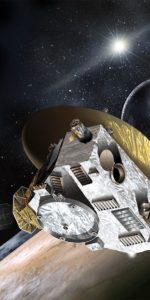
HOUSTON — Two cosmonauts will conduct a five-and-a-half-hour spacewalk Thursday, Feb. 16, to continue outfitting the International Space Station. NASA Television will broadcast the spacewalk beginning at 7:45 a.m. CST.
Expedition 30 Russian Flight Engineers Oleg Kononenko and Anton Shkaplerov will move one of the two Strela cranes from Pirs, the oldest Russian airlock and docking module, to the newer Poisk docking module. The 46-foot boom will be used for future assembly and maintenance work. The duo also will install five debris shields on the Zvezda service module and, if time permits, a small experiment on the forward section of the module, an experiment sample pack on Poisk and support struts on the Pirs ladder.
Both spacewalkers will wear Russian Orlan suits bearing blue stripes and equipped with NASA helmet cameras. They will emerge from the Pirs airlock at about 8:15 a.m.
This spacewalk will be the 162nd in support of space station assembly and maintenance. The last spacewalk occurred Aug. 3, 2011. For Kononenko, it will be his third spacewalk following two in July 2008 during Expedition 17. His two previous spacewalks lasted a total of 12 hours and 12 minutes. It will be Shkaplerov’s first spacewalk and the only one scheduled during Expedition 30.
Because of the location of the activities, Expedition 30 Commander Dan Burbank of NASA and Russian Flight Engineer Anatoly Ivanishin will be isolated in their Soyuz TMA-22 spacecraft, which is attached to the Poisk module, for the duration of the spacewalk. NASA Flight Engineer Don Pettit of NASA and European Space Agency Flight Engineer Andre Kuipers will be free to move about the U.S. segment of the complex. Their Soyuz TMA-03M is attached to the Rassvet module.
For NASA TV streaming video, schedule and downlink information, visit:
For more information about the International Space Station and its crew, visit:
Missions » ISS »



